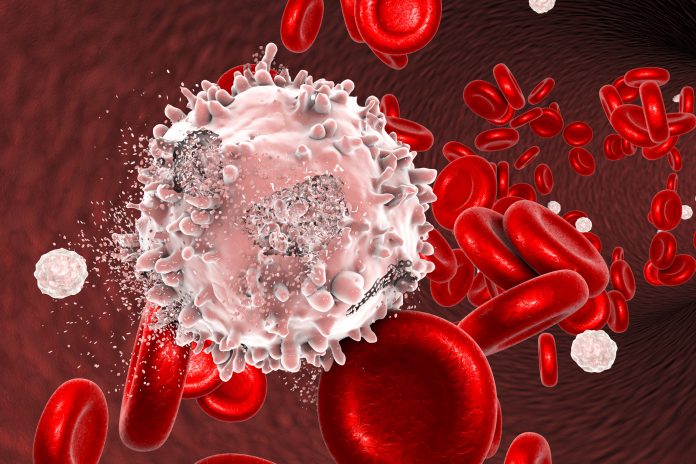
Genomics and early treatment response data can guide treatment of pediatric B-cell acute lymphoblastic leukemia (B-ALL) by flagging low-risk subtypes that respond well to lower intensity therapy, according to researchers from St. Jude Children’s Research Hospital. Patients with ETV6::RUNX1 and high-hyperdiploid B-ALL, they found, could skip the traditional recommended regime for a low-intensity version and still achieve positive outcomes.
The St. Jude team’s findings were published this week in Blood. The lead author is Katelyn Purvis, MD.
The intensity of a patient’s chemotherapy regime has traditionally been guided by the National Cancer Institute (NCI) risk classification, which is largely determined by clinical characteristics, such as age and white blood cell count at presentation. Traditional risk-based chemotherapy is a tailored approach that adjusts the intensity of treatment based on the individual patient’s characteristics.
But traditional risk factors by NCI criteria, the St.Jude researchers said, do not provide a complete picture of prognosis. The recent St. Jude Total Therapy clinical trials have refined these criteria by incorporating genetic subtypes and early treatment responses.
Patients with ETV6::RUNX1 and high-hyperdiploid B-ALL make up 25% and 30% of B-ALL cases, respectively. These patients can be classified as low risk provided they have no central nervous system or testicular involvement and respond well to induction (initial) chemotherapy. This approach reflects a shift towards a more individualized risk assessment model, accounting for both genetic and clinical factors.
“In the St. Jude Total Therapy XV study, we began incorporating genetic information and response criteria into our risk assessment. This risk classification system allows us to identify patients who can be treated with lower-intensity therapies while ensuring that those who require more intensive treatment receive it,” said corresponding author Hiroto Inaba, MD, PhD, St. Jude Department of Oncology.
“We strive to be mindful of using only the necessary treatments to achieve a cure, aiming to minimize the risk of enduring health issues and side effects from a child’s cancer treatment,” explained Purvis.
In this study, researchers evaluated patient outcomes from those enrolled on the St. Jude Total Therapy XV and XVI clinical trials. They looked at the correlation between genomics- and early treatment response-guided risk assessment and patient outcomes. By treating 93% of patients with ETV6::RUNX1 and 54% of those with hyperdiploid B-ALL who were traditionally considered high risk with low intensity chemotherapy, the investigators were able to achieve positive outcomes including excellent event-free survival rates.
“We tailored chemotherapy to better match patient needs and successfully identified who could benefit from low-intensity therapy. This strategy highlights our goal of personalizing treatment based on individual patient characteristics for better outcomes,” explained Inaba.
Patients who would have otherwise been treated with high-risk therapy experienced fewer side effects, such as thrombosis and pancreatitis. The findings suggest that by using genome- and early treatment response-guided risk classification, clinicians and researchers can accurately identify patients who are likely to benefit from less intensive treatment.
“We now have tangible evidence that reduced therapy can be beneficial for some patients, which decreases toxicity,” said Purvis.





